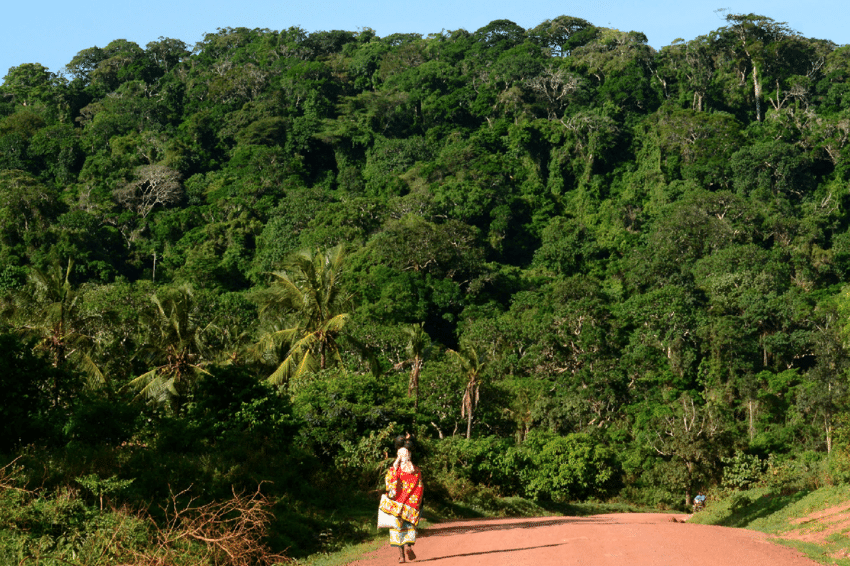Forests in Kenya: An exploration of verdant vistas
Kenya, renowned for its savannas and wildlife, also boasts an incredible diversity of forests that play a crucial role in the country’s ecosystem. These forests provide habitat for many species, support the livelihoods of local communities, and contribute significantly to Kenya’s water catchment areas. From the coastal mangroves to the montane forests of the highlands, Kenya’s forests are as varied as they are vital.
Key Forests in Kenya
Mau Forest Complext
- Location: Rift Valley
- Significance: The Mau Forest Complex, the largest indigenous montane forest in East Africa, is a critical water catchment area that supplies major rivers, including the Mara and the Sondu. It supports diverse flora and fauna, including endangered species like the bongo antelope.
- Conservation Efforts: Due to significant deforestation and degradation, various conservation initiatives have been launched to restore and protect the Mau Forest.
Kakamega Forest
- Location: Western Kenya
- Significance: The Kakamega Forest, Kenya’s only tropical rainforest, is a biodiversity hotspot. It is home to over 380 species of plants, 400 bird species, and numerous primates, including the rare De Brazza’s monkey. The forest is part of the larger Guineo-Congolian rainforest that once stretched across Africa.
- Ecotourism: Kakamega Forest offers unique ecotourism opportunities, with guided nature walks, bird watching, and primate tracking.
Aberdare Forest
- Location: Central Kenya
- Significance: Part of the Aberdare Range, this forest is known for its high-altitude bamboo forests and montane rainforests. It is home to large mammals like elephants, buffalo, and leopards, as well as endemic bird species.
- Water Catchment: The Aberdare Forest is a crucial water catchment area, feeding rivers that supply water to Nairobi and surrounding regions.
Mount Kenya Forest
- Location: Central Kenya
- Significance: Encircling the slopes of Mount Kenya, this forest comprises montane and bamboo forests. It supports diverse wildlife, including elephants, buffalo, and over 130 bird species.
- UNESCO World Heritage Site: Both Mount Kenya and its surrounding forests are recognized as a UNESCO World Heritage Site, highlighting their ecological and cultural importance.
Arabuko-Sokoke Forest
- Location: Coastal Kenya
- Significance: The largest coastal forest in East Africa, Arabuko-Sokoke is home to rare and endangered species such as the Sokoke Scops Owl, Clarke’s Weaver, and the Golden-rumped Elephant Shrew.
- Community Involvement: Conservation efforts in Arabuko-Sokoke involve local communities, emphasizing the sustainable use of forest resources.
Ngong Forest
- Location: Nairobi
- Significance: A remnant forest located near Nairobi, Ngong Forest provides a green sanctuary for the city’s residents. It hosts various bird species, small mammals, and indigenous trees.
- Urban Conservation: Ngong Forest is crucial for urban conservation, offering educational and recreational opportunities for Nairobians.
Ngare Ndare Forest
- Location: Central Kenya
- Significance: It is a popular spot for hiking and wildlife viewing, with several trails that offer stunning views of Mount Kenya. The forest is home to several species of primates, including the black and white colobus monkey, and is also home to the endangered African elephant.
Karura Forest
- Location: Nairobi
- Significance: Karura Forest Reserve is located in Nairobi and is a popular spot for hiking, biking, and birdwatching. The forest is home to a beautiful waterfall and several caves. Visitors can also take part in forest walks and enjoy the lush green surroundings.
Conservation Challenges and Efforts
Kenya’s forests face numerous challenges, including deforestation, encroachment, illegal logging, and climate change. However, concerted efforts are being made to address these issues through reforestation, community-based conservation, and sustainable management practices.
- Community Forest Associations (CFAs): Local communities play a pivotal role in forest conservation through CFAs, which empower them to manage and benefit from forest resources sustainably.
- Government Policies: The Kenyan government has implemented policies, including the Forest Act and the National Forest Program, to protect and restore forests.
International Support: Global initiatives and partnerships, such as the United Nations REDD+ program, support Kenya’s efforts to reduce deforestation and forest degradation.
Conclusion
Kenya’s forests are more than just lush landscapes; they are vital ecosystems that sustain wildlife, support communities, and contribute to the country’s environmental health. By appreciating and protecting these verdant vistas, we ensure that future generations can continue to enjoy and benefit from Kenya’s natural heritage. Explore, conserve, and cherish the forests of Kenya. Happy adventuring!
The Perfect Base for your next wildlife adventure
Should you be ready to immerse yourself in the lush, verdant beauty of the Maasai Mara, the Green Season awaits your arrival. Secure your stay at Enkakenya Mara Camp today, and prepare to craft memories that will linger for a lifetime.

